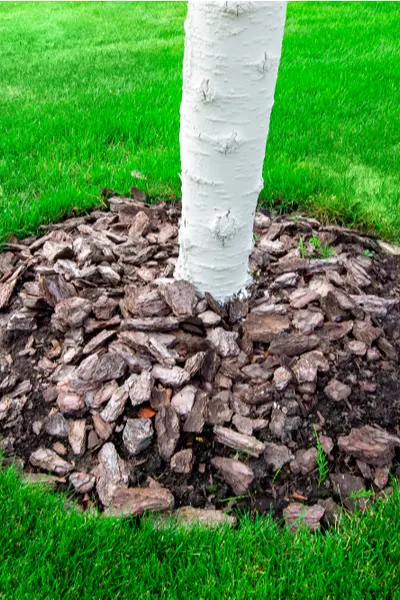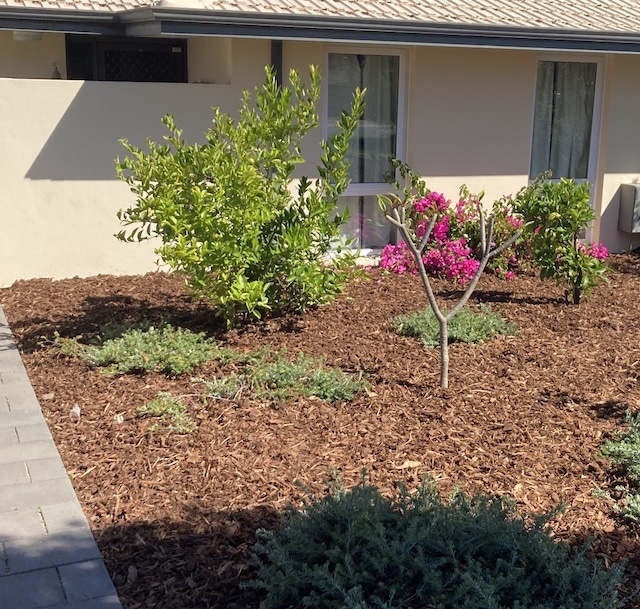Garden Bark: The Secret To A Beautiful And Lowmaintenance Landscape
Garden Bark: The Secret to a Beautiful and Low-Maintenance Landscape
If you're looking for a way to add beauty and interest to your landscape without a lot of maintenance, garden bark is a great option. Bark mulch is made from the shredded bark of trees, such as pine, cedar, and hemlock. It comes in a variety of colors and textures, so you can find the perfect one to complement your existing plants and hardscaping.
In addition to its aesthetic appeal, garden bark also offers a number of practical benefits. It helps to suppress weeds, retain moisture, and improve soil drainage. It can also help to protect plants from pests and diseases.
If you're considering using garden bark in your landscape, here are a few things you need to know:
- The right type of bark: Not all bark mulches are created equal. Some types, such as pine bark, can be acidic and leach tannins into the soil. This can be harmful to some plants, so it's important to choose a type of bark that is appropriate for the plants in your landscape.
- The right thickness: The thickness of the bark mulch layer is important. A layer that is too thin will not be effective at suppressing weeds or retaining moisture. A layer that is too thick can smother plants and prevent them from getting the oxygen they need. The best thickness for most landscapes is 2-3 inches.
- The right placement: Bark mulch should be placed around plants, trees, and shrubs. It should also be used in pathways and other areas where you want to suppress weeds and improve drainage.
- The right maintenance: Bark mulch will need to be replenished periodically as it breaks down. The frequency of replenishment will depend on the type of bark you use and the amount of foot traffic in your landscape.
With proper care, garden bark can add beauty and functionality to your landscape for years to come.
Here are some additional benefits of using garden bark in your landscape:
- It can help to reduce noise pollution. The sound of rain hitting concrete or pavement can be quite loud, especially in an urban setting. Garden bark can help to absorb sound and create a more peaceful environment.
- It can help to improve air quality. Bark mulch helps to filter pollutants from the air, making it a healthier place to live.
- It can attract wildlife. The insects and other small animals that live in garden bark help to keep your garden healthy and pest-free.
- It can extend the life of your plants. Bark mulch helps to retain moisture in the soil, which can help plants to survive during hot, dry weather.
If you're looking for a low-maintenance, yet beautiful and functional way to landscape your yard, garden bark is a great option. With its many benefits, garden bark is the secret to a beautiful and healthy landscape.
Garden bark is a versatile material that can be used for a variety of purposes in your garden. It can be used as a decorative mulch, to suppress weeds, and to improve soil quality. If you are looking for a natural and low-maintenance way to enhance your garden, garden bark is a great option.
To learn more about the different types of garden bark available, as well as how to use them in your garden, I recommend visiting Garden Wiki. This website has a wealth of information on garden bark, including articles, videos, and a blog. You can also find a calculator to help you determine how much garden bark you need for your project.
I hope this information is helpful. If you have any further questions, please do not hesitate to contact me.
FAQ of garden bark
null
Image of garden bark
- Shredded bark is a popular type of garden bark that is made from small pieces of bark that have been shredded. It is often used as a mulch around plants because it helps to retain moisture and suppress weeds.

- Chippings are another type of garden bark that is made from larger pieces of bark that have been chipped. They are often used in pathways and patios because they provide a decorative and functional surface.

- Mulch nuggets are a type of garden bark that is made from small pieces of bark that have been compressed into nuggets. They are often used as a mulch around plants because they are easy to apply and they do not attract pests or rodents.

- Ridged bark is a type of garden bark that is made from bark that has been ridged or grooved. It is often used as a decorative border around plants or as a mulch in raised beds.

- Colored bark is a type of garden bark that has been dyed or stained to add color to the garden. It is often used as a mulch around plants or as a decorative accent in flower beds.

Post a Comment for "Garden Bark: The Secret To A Beautiful And Lowmaintenance Landscape"